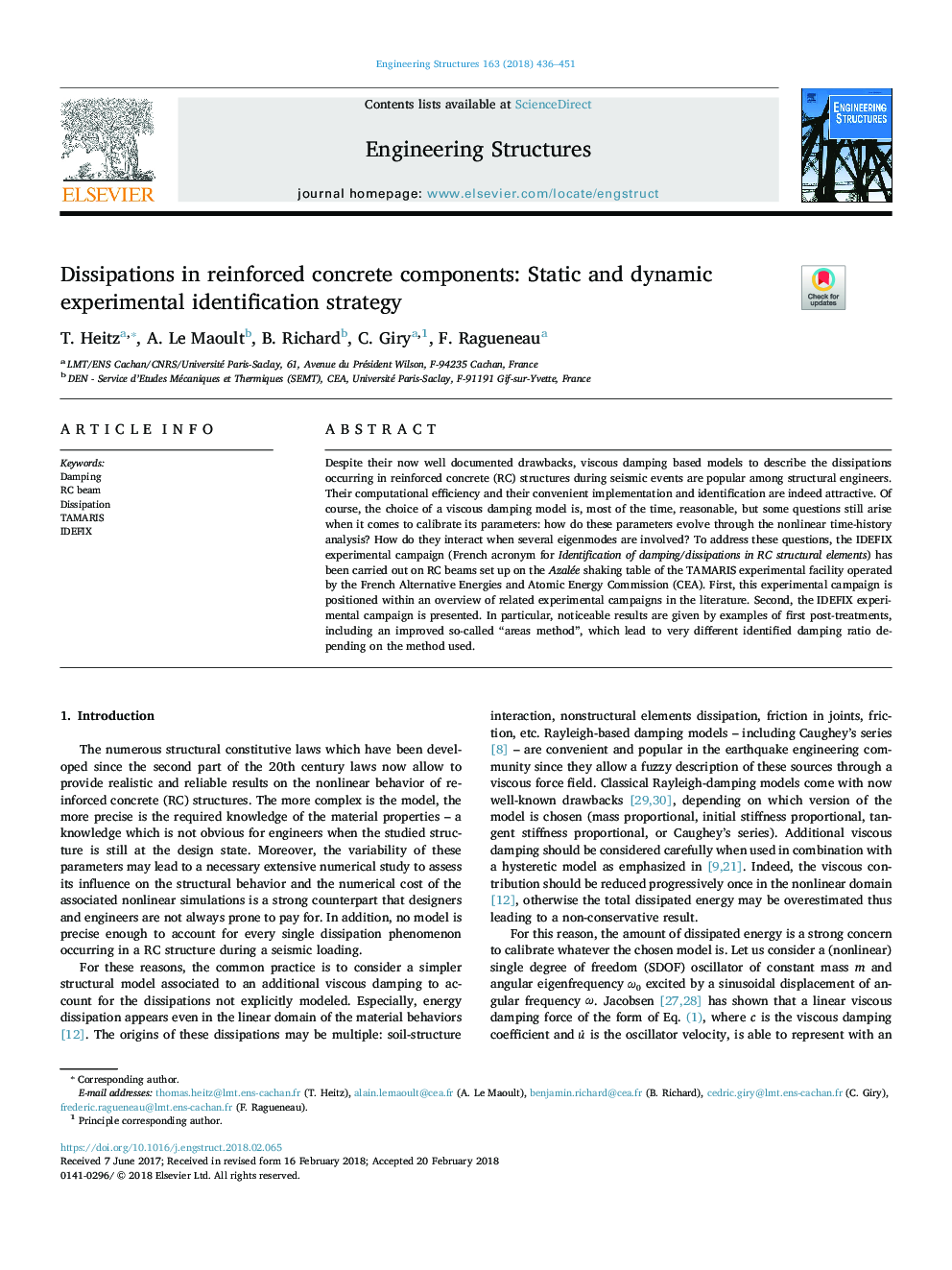| Article ID | Journal | Published Year | Pages | File Type |
|---|---|---|---|---|
| 6737857 | Engineering Structures | 2018 | 16 Pages |
Abstract
Despite their now well documented drawbacks, viscous damping based models to describe the dissipations occurring in reinforced concrete (RC) structures during seismic events are popular among structural engineers. Their computational efficiency and their convenient implementation and identification are indeed attractive. Of course, the choice of a viscous damping model is, most of the time, reasonable, but some questions still arise when it comes to calibrate its parameters: how do these parameters evolve through the nonlinear time-history analysis? How do they interact when several eigenmodes are involved? To address these questions, the IDEFIX experimental campaign (French acronym for Identification of damping/dissipations in RC structural elements) has been carried out on RC beams set up on the Azalée shaking table of the TAMARIS experimental facility operated by the French Alternative Energies and Atomic Energy Commission (CEA). First, this experimental campaign is positioned within an overview of related experimental campaigns in the literature. Second, the IDEFIX experimental campaign is presented. In particular, noticeable results are given by examples of first post-treatments, including an improved so-called “areas method”, which lead to very different identified damping ratio depending on the method used.
Keywords
Related Topics
Physical Sciences and Engineering
Earth and Planetary Sciences
Geotechnical Engineering and Engineering Geology
Authors
T. Heitz, A. Le Maoult, B. Richard, C. Giry, F. Ragueneau,
